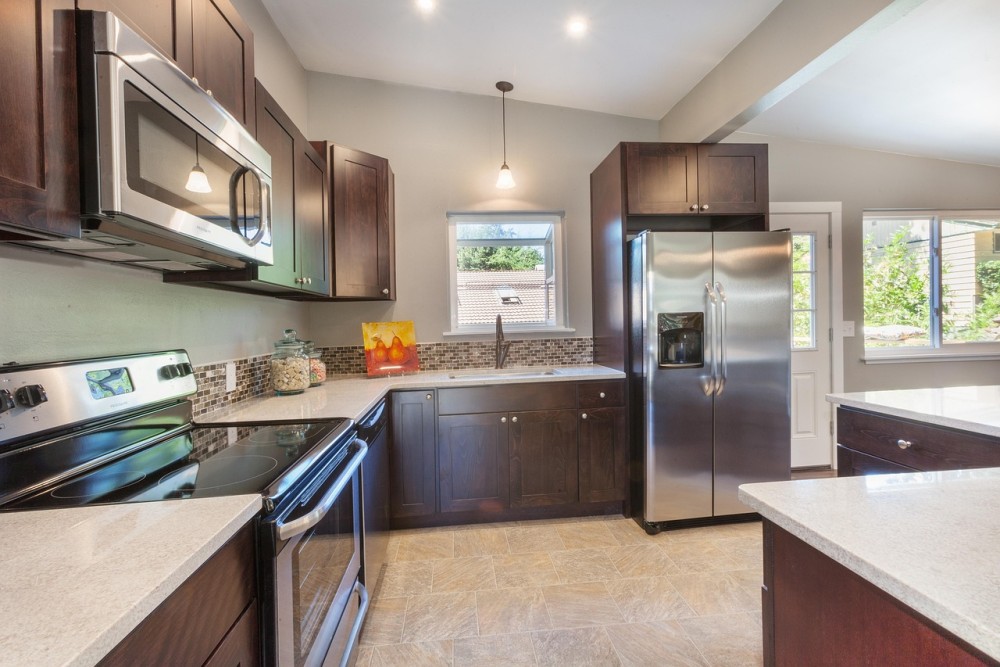The smart appliances market is projected to reach $93.03 billion by 2032, up from an estimated $43.55 billion in 2025, reflecting a compound annual growth rate (CAGR) of 11.5 percent during the forecast period.
This is according to new market research report titled "Smart Appliances Market by Product Type (Kitchen, Laundry, HVAC, Entertainment, Security), Technology (Wi-Fi, Bluetooth, Zigbee, Matter), Distribution Channel (Online, Offline, Direct), End User (Residential, Commercial), and Geography – Global Forecast to 2032," published by Meticulous Research.
The growth of this market is driven by increasing smart home penetration, technological advancements, and rising consumer demand for connected, intelligent home solutions.
‘The smart appliances market is experiencing rapid growth due to increasing consumer demand for connected, energy-efficient, and AI-powered home solutions. The rise of smart homes, coupled with advancements in IoT (Internet of Things) and voice-assisted technologies, is fueling adoption. Consumers are prioritizing appliances that offer remote monitoring, automation, and energy savings, driving manufacturers to innovate,” Meticulous research said.
“Government initiatives promoting sustainable energy use and smart city developments are further accelerating market expansion. Additionally, the integration of machine learning for predictive maintenance and personalized user experiences is transforming the industry. The growing popularity of smart kitchens and laundry solutions, along with increasing disposable incomes in emerging economies, is also contributing to market growth,” it added.
GROWTH OPPORTUNITIES
The evolution of AI-driven appliances is revolutionizing the way consumers interact with home devices. Modern smart appliances now feature self-learning capabilities, voice control (via Alexa, Google Assistant, etc.), and seamless connectivity with other smart home ecosystems. 5G and edge computing are expected to enhance real-time data processing, enabling faster and more efficient appliance performance. Moreover, the increasing focus on sustainability is pushing manufacturers to develop energy-star-rated smart appliances that reduce carbon footprints.
Emerging markets in Asia-Pacific (China, India, Southeast Asia) and Latin America present significant growth opportunities due to urbanization, rising middle-class populations, and increasing tech adoption.
MARKET CHALLENGES
Despite strong growth prospects, the high cost of smart appliances compared to conventional ones remains a barrier, particularly in price-sensitive regions. Cybersecurity risks associated with IoT-enabled devices and interoperability issues between different smart home platforms also pose challenges. Additionally, lack of awareness in developing regions and data privacy concerns may slow adoption rates.
SEGMENT INSIGHTS
The global smart appliances market is segmented by product type (smart kitchen appliances, smart laundry appliances, smart HVAC appliances, smart entertainment appliances, smart security appliances, and other product types), by technology (Wi-Fi, Bluetooth, Zigbee, Z-Wave, Matter, and other communication technologies), by distribution channel (online, offline, and direct), by end user (residential and commercial), and geography (North America, Europe, Asia-Pacific, Latin America, and the Middle East & Africa)
The smart kitchen appliances are expected to dominate the market in terms of revenue share in 2025. This dominance is primarily driven due to the increasing adoption of appliances like smart refrigerators, ovens, dishwashers, and coffee makers. The convenience offered by remote control, energy efficiency, and integration with voice assistants like Alexa and Google Assistant has fueled strong demand in this segment.
However, smart security appliances, which include smart door locks, video doorbells, and surveillance systems—are anticipated to witness the fastest growth during the forecast period. This surge is attributed to the rising emphasis on home safety, the growing availability of affordable smart security solutions, and the integration of AI and real-time alerts into home monitoring systems. Increased smart home penetration, particularly in urban areas, further boosts this segment's rapid expansion.
MARKET BY TECHNOLOGY
The Wi-Fi technology is expected to dominate the smart appliances market in 2025. Its widespread availability, ease of integration with home networks, and compatibility with most smart home ecosystems contribute to its dominant position. Consumers prefer Wi-Fi-enabled appliances for features like remote control, real-time notifications, and seamless updates, making it the most adopted technology across smart kitchen, HVAC, and entertainment appliances.
On the other hand, the Matter protocol is expected to witness the fastest growth during the forecast period. As a relatively new universal standard developed by the Connectivity Standards Alliance (CSA), Matter promises enhanced interoperability, reliability, and security across brands and platforms. Its rapid adoption is being driven by strong support from major tech giants (e.g., Apple, Google, Amazon, Samsung) and increasing consumer demand for streamlined and brand-agnostic smart home experiences. As more smart appliances become Matter-compatible, its adoption rate is set to accelerate significantly.
PIXABAY PHOTO


